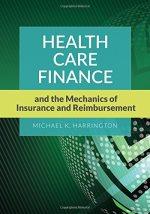Question
Here are simplified financial statements for Phone Corporation in a recent year: INCOME STATEMENT (figures in $ millions) Net sales $13,700 cost of goods sold
Here are simplified financial statements for Phone Corporation in a recent year: INCOME STATEMENT (figures in $ millions)
Net sales $13,700 cost of goods sold 4,360 other expenses 4,047 depreciation 2,698 earnings before interest and taxes (EBIT) $2, 595 Interest expense 715 Income before tax $1,880 Taxes (at 35%) 658 Net income $1,222 Dividends $916
BALANCE SHEET (figures in $ millions) Assets Cash and marketable securities end of year 95 start of year 164 Receivables end of year 2,682 start of year 2,610 inventories end of year 217 start of year 268 other current assets end of year 897 start of year 962 total current assets end of year $3,891 start of year 4,004 Net property, plant, and equipment end of year 20,033 start of year 19,975 other long-term assets end of year 4,276 start of year 3,830 total assets end of year 28,200 start of year 27,809 liabilities and shareholders' equity: payables end of year 2,624 start of year 3,100 short-term debt end of year 1,449 start of year 1,603 other current liabilities end of year 841 start of year 817 total current liabilities end of year 4,914 start of year 5,520 long-term debt and leases end of year 5,524 start of year 5,759 other long-term liabilities end of year 6,238 start of year 6,209 shareholders' equity end of year 11,524 start of year 10,321 total liabilities and shareholders' equity end of year 28,200 start of year 27,809
Calculate the following financial ratios for phone corporation: (Use 365 days in a year. Do not round intermediate calculations. Round your percentage answers "Return on equity", "Return on assets", "return on capital" and "operating profit margin" to 2 decimal places and the rest to 2 decimal places)
a. return on equity (Use average equity)
b. Return on assets (Use after-tax operating income and average assets)
c. Return on capital (Use after-tax operating income and average capital)
d. Days in inventory (Use beginning inventory)
e. Inventory turnover (Use beginning inventory)
f. Average collection period (Use beginning receivables)
g. operating profit margin (Use after-tax operating income)
h. long-term debt ration (Use end of year values)
i. Total debt ratio (Use end of year values)
j. times interest earned
k. cash coverage ratio
l. current ration (use end of year values)
m. quick ratio (Use end of year values)
Step by Step Solution
There are 3 Steps involved in it
Step: 1

Get Instant Access to Expert-Tailored Solutions
See step-by-step solutions with expert insights and AI powered tools for academic success
Step: 2

Step: 3

Ace Your Homework with AI
Get the answers you need in no time with our AI-driven, step-by-step assistance
Get Started


